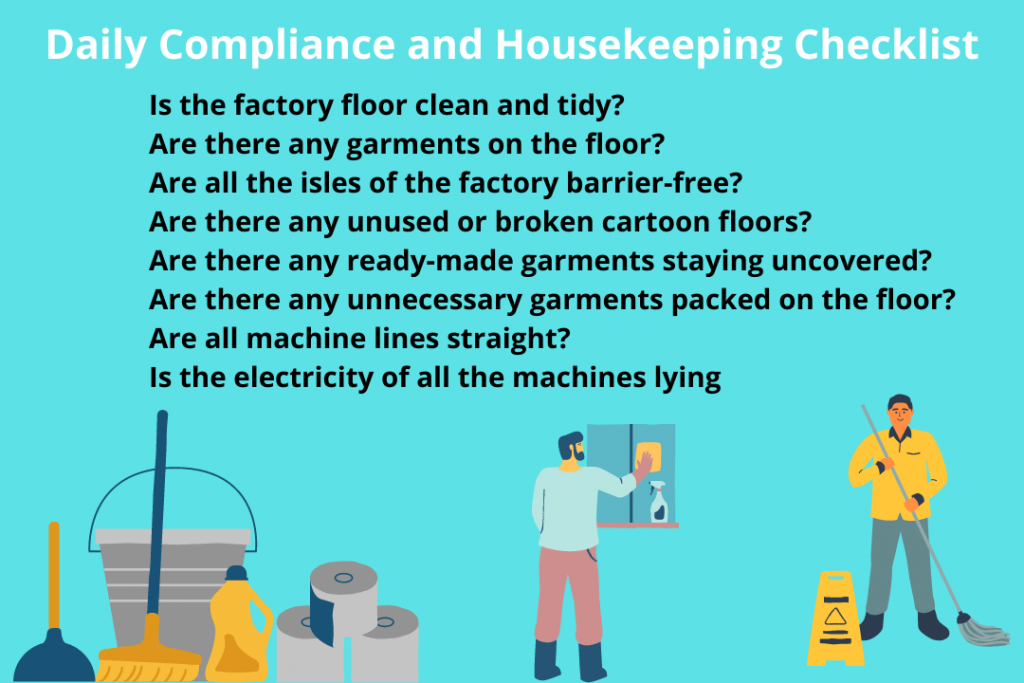The textile and apparel manufacturing business is very much complex and both export & import include in it; in order to get success in the business, management level, and the system is also stable and effective. In this era, the textile and apparel industry’s management system depends on business volume; the bigger industry, the bigger the management chain flow is there and vice versa. The smaller business owner can take strong leadership to every individual manager. This article is focused on Management levels and their functions in Textile Industry.
Management levels and Their Functions in the Textile and Apparel Industry
As the textile and apparel sectors have 95% production for export, so strong management system exists everywhere to reduce the level of complexity and quick decision making. An industry’s overall performance depends on how the management system performs there, a management system is teamwork that maintains a long chain of leadership. So good management is necessary to be organized industry.

Skills of Good Management of Textile and Apparel Industry
- Problem-solving and Quick decision making
- Good Technical Skill
- Interpersonal or Human and teamwork Skills
- Better Communicator and motivator
- Strategic planning and implementation
- Critical thinking and finding a result
- Customer focus and priority
- Conflict management among the team
- Negotiation skills.
- Project management.
- Time management.
- Entrepreneurship.
- Good Behavior and manpower management.
- Adaptability/ flexibility
- Being result oriented and having a quick action-taking ability.
- Product development.
- Working under pressure.
Levels of Management in Textile and Apparel Industry
- Top Management
- Middle Management (Mid-Level Management)
- Lower Management
Top Management
Top management is the management who are sitting at the top positions, the ultimate authority and admiration of the textile and apparel industry. Most of the time they are involved with business deals and make big financial and order-related decisions. Top management is Chairman, Managing director, CEO, etc.
Functions of Top management
- Keeping a good relationship with all customers.
- Follow up and directly monitor company revenue.
- Lead middle management and held accountable for them.
- Plan and organize the whole plant.
- Decision Making for keeping business in the right direction.
- Follow up on overall productivity.
- Long-term strategy discussion and implementation.
- Liaison with the related business associates, vendors, and customers.
- Take the business risk of profit and loss.
- Controlling and overseeing the entire plant.
Middle Management
Generally, Middle management, called intermediate management, executive task, works with both top and lower levels. Middle management is accountable to top management and all types of authority on lower management. Middle management is the link between top management and lower management. Middle management is managers, executives, and engineers. Middle management is the backbone of the textile and apparel industry and their leadership qualities are key to the success of any industry.
Functions of Middle management
Area wise Manpower distribution
Problem-solving of different processes, taking corrective and preventive action.
Report to top management about overall performance and KPI.
Accountable to top management and leading lower management.
Mentoring, coaching, and training to lower management.
Define and allocate jobs for lower management and workmen.
Take full ownership of the respective task.
Taking all critical decisions for running smooth production.
Responsible for the overall productivity of textile and apparel.
Responsible for profit, loss, on-time delivery, and customer complaints.
Lower Management
Lower level management is known as “worker staff” or ” operational staff”, the last step of management and technically their performance is the key to a company’s operational efficiency. Lower management generally does supervise tasks, lead and control workmen. Generally, Lower management cannot reach top management. Lower managements are foreman, in-charge, and supervisor. The lower management team must have to be an expert in work and machine operating.
Functions of Lower Management
- Directly supervise and monitor respective sections.
- Directly responsible for production and quality of respective areas.
- Lead all the workmen directly and have full control over them.
- Keep the workplace safe and organized.
- Ensure product quality as per buyer requirements.
- Report to middle management.
- Define and train up workmen about the job description and discipline.
- They have to fill up daily production target quantity and be accountable for it.
Different Management Levels Based on their Position/ Designation
| Designation | Management Level | |
| 1 | Chairman | Top Management |
| 2 | President | Top Management |
| 3 | Vice President (VP) | Top Management |
| 4 | Managing director (MD) | Top Management |
| 5 | Deputy managing director (DMD) | Top Management |
| 6 | Executive Director (ED) | Top Management |
| 7 | Director | Top Management |
| 8 | Chief financial officer (CFO) | Top Management |
| 9 | Chief executive officer (CEO) | Top Management |
| 10 | Chief operating officer (COO) | Top Management |
| 11 | Chief Information Officer (CIO) | Top Management |
| 12 | Chief Marketing Officer (CMO) | Top Management |
| 13 | General manager (GM) | Top Management |
| 14 | Engineer | Middle Management |
| 15 | Manager | Middle Management |
| 16 | Assistant Manager | Middle Management |
| 17 | Senior Executive | Middle Management |
| 18 | Executive | Middle Management |
| 19 | Officers | Middle Management |
| 20 | Foreman | Lower Management |
| 21 | In-charge | Lower Management |
| 22 | Supervisor | Lower Management |
| 23 | Team leader | Lower Management |
- You may love to read: Apparel Manufacturing Management System


